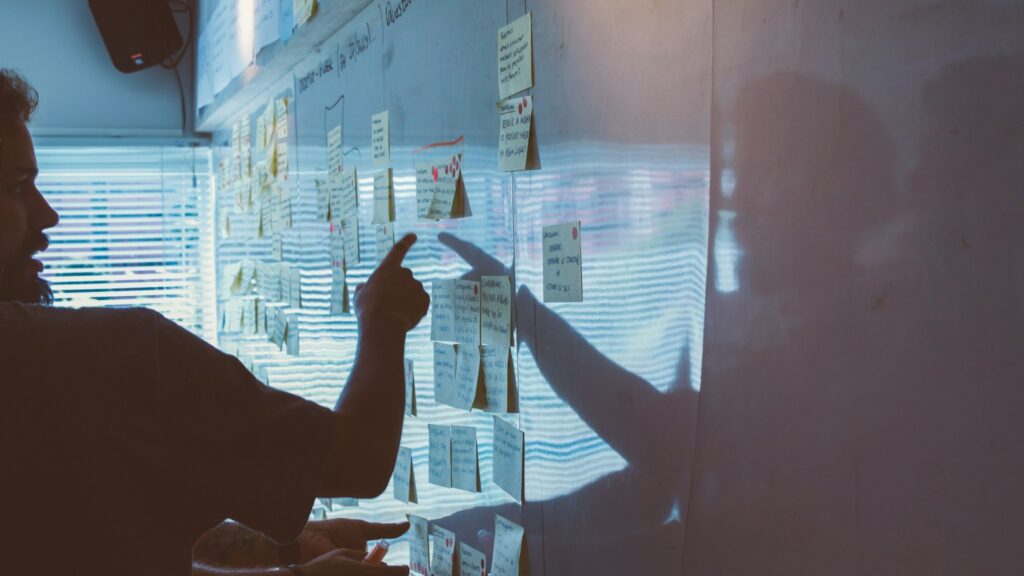Learning professionals possess a unique superpower: we understand how people learn. We know that reflection cements understanding, repetition builds retention, contextual learning increases relevance, and social interaction accelerates development. Yet too often, these powerful principles remain locked within formal learning programmes instead of being applied where learning naturally happens – in workplace communities.
The CIPD’s Learning at Work 2023 report reveals a compelling opportunity: only 17% of individuals engage in socialised communities to support learning, and a mere 18% know how to learn effectively from connections with others. When we bring our understanding of learning science into these existing spaces, we don’t just improve individual development – we nurture a culture where continuous learning becomes part of how work gets done.
For learning professionals feeling the pressure of increasing workloads (53% report increased workload despite resource gains), nurturing existing communities offers a more sustainable approach than creating new platforms or pushing more content. By applying evidence-based learning principles where people already gather and collaborate, we can create ripple effects that transform organisational culture from within.
When learning is directly connected to a real need, the brain prioritises this information.
Communities: The natural habitat for learning culture
Culture isn’t something we can manufacture – it emerges from daily interactions and shared experiences. As I’ve often said, everyone is the CEO of culture. Every interaction either deposits into our culture bank account or takes its toll.
The CIPD research underscores this reality. Only 41% of organisations report they “develop and maintain a climate of trust,” and just 33% “embrace mistakes as an opportunity to learn.” We can’t force these qualities through L&D initiatives alone, but we can nurture them in spaces where people already connect.
The most effective learning culture is “where individuals, leaders, teams, and L&D departments are all working together to share, grow and adapt for the benefit of the business.” This happens not through platforms and programmes but through conversations, challenges, and collaborations that workplace communities naturally foster.
Five ways to nurture learning in workplace communities
Here’s how we, as learning professionals, can nurture these communities to help learning flourish.
1. Connect learning to community purpose
Communities form around shared purpose – a project, practice area, or business challenge. Our job isn’t to redirect these spaces toward “learning objectives” but to discover how learning can serve what the community already cares about.
As learning professionals we know that relevance drives engagement and retention. When learning is directly connected to a real need, the brain prioritises this information because it is immediately useful. Well-used communities are the places that provide the context where knowledge will be applied.
Case study: Grief Awareness Community at Cadent Gas
Bereavement has affected an estimated 1 in 8 people within the UK since the pandemic, and Cadent Gas saw a need to support those experiencing this trauma across its workforce. The Grief Awareness Community Group was launched in 2022, spearheaded by Claire Valentine, a hydrogen programme specialist who was going through her own bereavement experience at the time. The community’s goal is to help people share their experiences of trauma and nurture a culture of belonging; with board-level backing, it has already made a significant impact.
Working closely with the National Bereavement Service, the community offers education and advice to grieving colleagues. It hosts a regular podcast to encourage others to speak up about their trauma, plus a regular drop-in session for colleagues to talk about loss.
Cadent Gas’ role in supporting and expanding this community led to the organisation winning the 2024 Culture Pioneer Awards for Inclusion.
We all learn extensively through observing others and participating in communities of practice. Let’s find ways of making it easier for others to feel safe doing just that.
2. Build trust and visibility
The CIPD report also reveals that only 36% of organisations “encourage enquiry and curiosity from all individuals.” Communities thrive when people feel safe to ask questions, share half-formed ideas, and admit what they don’t know. When we get involved with an existing community we can make that the norm by potentially modelling vulnerability ourselves.
Communities create the space to ask questions rather than provide answers. They are perfect for recognising and encouraging contributions. In my own research over the last 20 years, high-performing learning teams were proactive in helping others reach out to each other – making it easy for them to find and connect with those they needed to.
Simple interventions allow us to apply a little social learning theory in situ! We all learn extensively through observing others and participating in communities of practice. Let’s find ways of making it easier for others to feel safe doing just that.
Impact indicators: Increased question-asking; broader participation across hierarchy levels; members revealing challenges alongside successes.
Case study: Action research at Coleg Sir Gar and Coleg Ceredigion
Coleg Sir Gar and Coleg Ceredigion won the Learning category of the 2023 Culture Pioneer Awards for successfully nurturing a culture of curiosity. By offering action research projects to its teaching staff, the college aims to give young learners access to teachers who are, themselves, excited to learn and continually develop in their practice.
To ignite this curiosity, the programme permits teachers full ownership of their research project – its focus, methodology, and how it evolves. The programme culminates with an emphasis on knowledge sharing. An online platform is created for researchers to share their findings and fresh thinking, and a Festival of Practice offers interactive workshops to all teaching staff who themselves are curious as to how the research findings can be applied within their own practices.
Every community contains hidden expertise waiting to be discovered. Our role is to bring this expertise to light.
3. Spark meaningful conversations
Too often, we see communities as channels for distributing content. That is not helpful unless super targeted directly into the pain point of the individual when they need it. But shifts in our behaviour happens through conversation, not content consumption.
Try posting thought-provoking questions instead of links to resources. When you do share content, frame it with a question that connects to the community’s work. “This research suggests X approach to customer retention. How does this compare with your experience?”. Create weekly discussion rituals that encourage reflection and application. Let’s apply that little piece of science that shows us that elaborating and explaining concepts in your own words significantly enhances understanding and retention by encouraging reflection and building on insights.
The CIPD research shows that only 36% of respondents agreed individuals are “encouraged to reflect on what they learn from their day-to-day work,” highlighting a significant opportunity for conversation starters that prompt reflection.
Learning science confirms that elaboration. When community members articulate their thoughts about a topic, they’re engaging in one of the most effective learning techniques available.
Communities allow us to shine a spotlight on and celebrate success.
4. Activate peer expertise
Every community contains hidden expertise waiting to be discovered. Our role is to bring this expertise to light and create opportunities for peer learning.
Try creating ‘challenge sessions’ where members bring real work problems for collective input. Tag subject matter experts to answer questions. Create informal mentoring connections between members with complementary expertise.
With only 36% of managers supporting their teams to transfer learning back to the workplace (CIPD report), peer-to-peer knowledge sharing becomes even more crucial. The retrieval practice that happens when peers explain concepts to each other is among the most robust learning techniques identified by cognitive science research. Let’s encourage a bit of it when we engage with communities.
Case study: Progeny’s Festival of Learning
Historically, Progeny’s approach to employee learning focused on mandatory tick-box training. With aspirations to change this, the professional services organisation crafted a vision to offer a broader L&D offering that layered learning experiences and provided a wealth of diverse and creative initiatives. One such initiative is its annual three-week Festival of Learning, which aims to encourage peer learning across the organisation. Each year, the company invites team members to design and deliver workshops to showcase their unique talents and tacit knowledge. Since launching this initiative, a cohort of learning champions have naturally coalesced who see the benefit of a different way of delivering learning.
Following its move toward a more progressive and inclusive L&D strategy, Progeny bagged the Learning trophy for last year’s Culture Pioneer Awards.
Culture Pioneers in Learning don’t try to build learning culture from scratch – they recognise and nurture the learning already happening through communities.
5. Showcase community impact
Communities allow us to shine a spotlight on and celebrate success. Whether it is through a share from a manager or a thoughtful comment from a senior leader. When learning happens through community interactions, we can shine a light so that it is visible to the wider organisation.
We can help:
- Connect the dots between community participation and business outcomes.
- Capture and share stories of how community discussions led to improvements.
- Track themes emerging from conversations and share these insights with leadership.
- Create ‘learning spotlights’ that trace innovations back to community exchanges.
As learning professionals we know that when community members share how they’ve applied insights, they’re reinforcing their own learning while creating value for others.
From content creator to learning cultivator
This approach fundamentally shifts our role as learning professionals. We move from being content creators and programme managers to learning cultivators who help nurture people’s potential.
Culture Pioneers in Learning don’t try to build learning culture from scratch – they recognise and nurture the learning already happening through communities. They are present in environments where people meet to nurture opportunities, where learning can flourish, spark conversations that stimulate growth, and make visible the value being created.
This Cultivating Learning in Workplace Communities toolkit can provide additional guidance for those ready to take this approach further. But you don’t need to wait for a toolkit to begin. Start small:
- Identify one workplace community aligned with important business goals.
- Spend time observing the community’s natural dynamics and purpose.
- Choose one of the five approaches above and experiment.
The organisations winning Culture Pioneer Awards aren’t implementing grand learning culture initiatives. They’re making daily deposits into their culture bank accounts by meeting people where they are and nurturing the learning that naturally happens through connection.
What community will you start nurturing this week?
TrainingZone is a proud media partner of Culture Pioneers – a campaign to both support organisations driving impactful culture change, and commend those who are leading forward and challenging the status quo at work.
The Culture Pioneers campaign provides expert guidance and insights, while celebrating workplace cultures that drive real business impact. The best businesses don’t just adapt; they shape the future.





